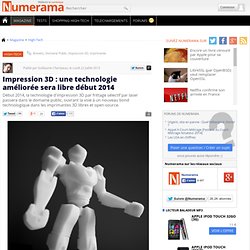

MindCub3r for EV3. Build your own LEGO® MINDSTORMS® robot to solve the Rubik's Cube®... 1.

Description MindCub3r is a robot that can be built from a single LEGO MINDSTORMS EV3 home set (31313) or from EV3 Education Core and Expansion sets (45544+45560) to solve the well known Rubik's Cube puzzle. All MindCub3r software releases should work with LEGO EV3 firmware versions from v1.06H (home) and v1.06E (Education) onwards. It is recommended that the EV3 firmware is always updated to the latest version released from LEGO. Construct the robot by carefully following the build instructions (Home) or build instructions (Education) and then download and install the software described below. MindCub3r software consists of three main parts: Note: release v2p1 uses the .rtf extension to enable the files to be downloaded using the standard LEGO MINDSTORMS EV3 software. 2. 4. 4.1 General The video of the home variant of MindCub3r shows a prototype. 4.2 Tilting.
The DIY 'Maker Movement' Meets the VCs. In a light-filled loft in lower Manhattan, a dozen young workers stuff tiny circuit boards and empty Altoids cans into plastic bags. These will be packed into kits and shipped to do-it-yourselfers worldwide, who use the components to create homemade smartphone chargers. The loft, a former Wall Street trading floor, is the headquarters of Adafruit Industries, an electronics distributor that last year sold $5 million worth of Altoids kits, TV-B-Gones (remotes guaranteed to silence any television), and hundreds of other oddball products.
Coming soon: a wired video jacket that plays movies and jewelry embedded with pulsating LED lights. “Over the last year, we’ve doubled in revenue; in number of products, we’ve quadrupled,” says Phillip Torrone, creative director of the seven-year-old company. Adafruit is one of hundreds of growing ventures in the U.S. that belong to the so-called maker movement. Despite their passion for collaboration—or perhaps because of it—maker companies are thriving. Free Computer Books : IT, Programming and Computer Science.
Solar ski helmet keeps you charged on the slopes - Fraunhofer IZM. The new 3D solar panel developed by Fraunhofer IZM is almost invisible when mounted on a ski helmet. Using brand new techniques, the high-performance solar cells can be fit to the curve of a helmet without forfeiting durability and performance. Together with the TU Berlin and the company TEXSYS, Fraunhofer IZM has developed a new communication module that can be integrated directly into a helmet.
It lays the foundation for covering all the power requirements the keen skier may have, including stereo headphones and headsets that will soon be powered solely by energy gained from the solar panels attached to the surface of the ski helmet. Mobile devices like smart phones and MP3 players can then be connected wirelessly via Bluetooth. Incoming calls can be received without breaking glide using the accompanying Bluetooth-enabled glove. How does it work? Consequently, adapting the solar panel to the curved shape of the ski helmet was the biggest challenge. Théorie. The Maker Movement. Preface I’ve been so busy making making things, making a hackerspace at FamiLAB, making a Maker Faire, talking about Making our Community better, and launching a maker-focused foundation that I don’t update this page often enough… I originally wrote this because I was constantly answering “What is a Maker?”

– but I don’t get the question anymore – and that is a good thing. If this is really interesting to you, and you want to know more, just ask We’ve formed The Maker Effect Foundation to activate and amplify the efforts of makers as they learn, build and work together in their communities, please visit our website to learn more. If you live in Orlando, our community page is a great place to learn more about our local organizations that support makers.
It is a great time to be a “Maker”! Recently we’ve seen Instructables, a community web site with instructions for making just about anything, purchased by Autodesk, who makes AutoCAD, and many other professional software titles. Serial Makers. Impression 3D : une technologie améliorée sera libre début 2014. Les imprimantes 3D intéressent de plus en plus d'amateurs, mais elles sont encore loin d'être accessibles au grand public.

Surtout, les résultats qu'elles produisent paraissent souvent décevants pour qui s'attend à obtenir des produits de qualité comparable aux objets industriels vendus dans le commerce. Mais l'impression 3D personnelle en est encore à sa préhistoire, et progresse à vive allure. Elle pourrait connaître un nouveau saut au début de l'année prochaine. Actuellement, les modèles les moins chers d'imprimantes 3D sont basés sur une technologie d'extrusion de plastique (ABS ou PLA), où les objets sont fabriqués par l'addition de fines couches de plastique fondu, qui durcit très vite au contact de l'air. Esthétiquement, même avec les résolutions les plus fines, les différentes couches restent visibles, contrairement aux objets plastiques obtenus par injection dans un moule.
Mais au début de l'année 2014, un nouveau bond technologique devrait avoir lieu.